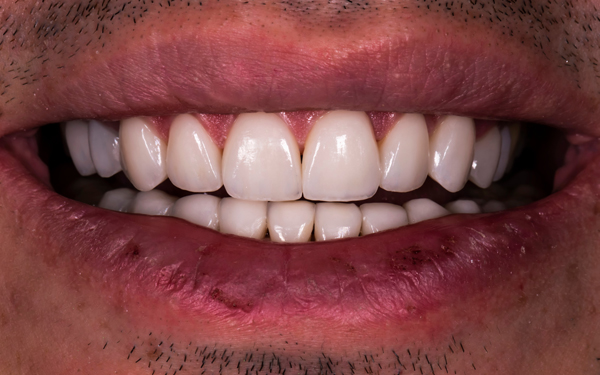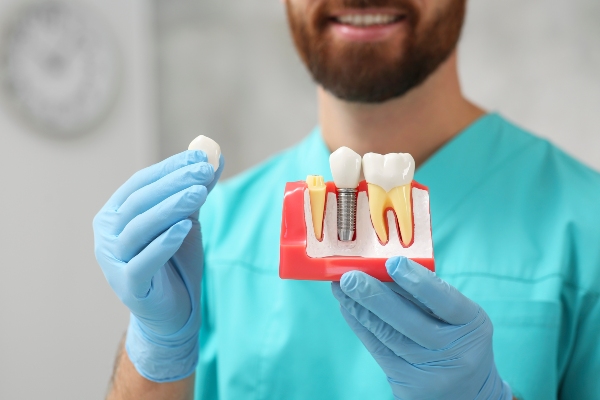When Should I Consider Restorative Dentistry Services?

Restorative dentistry deals with diagnosing, treating, and preventing oral problems. The dentist may recommend a treatment plan to restore a chipped, cracked, decayed, discolored, or lost tooth. Any patient with a structurally impaired tooth qualifies for restorative treatment. The dentist may recommend a dental filling, implant, crown, or bridge, depending on the nature of the problem.
When to consider restorative dentistry services
Restorative dentistry helps people correct their smiles after experiencing oral damage. Treatments for minor chips and cracks are available under restorative dentistry. If one or more teeth are lost, it is crucial to replace them before the remaining gaps are prone to invasion by plaque bacteria, which could cause an infection. In addition, missing teeth place undue strain on existing teeth and could lead to misalignment.
It is possible to remove severe stains and discoloration on the teeth with professional teeth whitening. However, some stains are intrinsic and cannot be cleaned with chemicals.
Available Restorative Dentistry Treatment Options
Dentists often use four main dental materials for dental restoration: porcelain, amalgam, composite resin, and gold. They can be deployed for use in any of the following restorations:
Veneers
Usually created from porcelain or composite, they are tooth-colored restorations for hiding flaws on the teeth. Veneers are cemented onto the surface of the teeth, usually the front set of teeth, to improve their appearance. They can be used for chipped, cracked, or broken teeth. The dentist can also use them for minor orthodontic misalignments.
Dental fillings
If a tooth is severely decayed or a previous filling gets damaged, the dentist can use dental fillings to restore the tooth’s appearance. The composite resin material is mostly used for the front teeth because it can be customized to match the tooth color. Most patients prefer this option because they are hardly noticeable in the mouth and only take one appointment.
Dental crowns
A dental crown, also known as a cap, is a type of dental restoration that covers a damaged or decayed tooth’s entire visible portion (tooth surface). Its purpose is to restore function, strength, and appearance in one’s smile. In addition, it protects the tooth’s structure beneath it from further deterioration and helps prevent further breakage.
Dental Implants
Dental implants are the most predictable and successful method of replacing missing teeth. They are designed to provide a foundation for replacement teeth that look, feel, and function like natural teeth. The implants consist of titanium, a strong metal biologically compatible with the human body. Our dentist will surgically place the implants into the jawbone, where they fuse with surrounding bone tissue, creating a strong foundation for artificial teeth, crowns, or bridges.
Fixed Dental Bridge
The advantage of using a fixed dental bridge is that it provides a permanent solution for replacing missing teeth and looks natural when properly affixed. A fixed dental bridge comprises three parts: a crown on either side of the gap (or two crowns if there is more than one missing tooth), which serves as an anchor for two artificial teeth called pontics. The pontics will rest against the existing teeth on either side of the gap.
Composite Bonding
Composite bonding, also known as bonded porcelain veneers or porcelain laminates, is a restorative dentistry procedure that uses tooth-colored fillings to restore decayed or damaged teeth. This restorative dentistry service gets its name because we bond composite material to the patient’s natural tooth structure. Composite bonding can be used to repair chips, cracks, and gaps between teeth, as well as restore discoloration. This treatment is reserved for those with gaps too large for a traditional dental filling.
Root Canal Therapy
Root canal therapy is a procedure to remove diseases or decayed tissue from inside a tooth’s pulp. The pulp is made up of living cells, blood vessels, and connective tissue that give vitality to the teeth. Patients with a cavity that reaches the pulp can experience pain or sensitivity because the nerve has been injured.
Root canal therapy removes the damaged pulp and replaces it with a material called gutta-percha and sealer to protect the patient’s nerves. The procedure is usually done to save the tooth from being extracted, but sometimes a tooth with a large filling on the biting surface can be restored to its original shape and size. Sometimes, patients must undergo root canal therapy before receiving any of the above restorative dentistry services.
Restore Your Smile Today
Restorative dentistry is necessary to restore the appearance of a smile when a patient suffers from oral health issues. We invite patients to book an appointment with our dentist for an evaluation to determine the most effective treatments for their condition.
Request an appointment here: https://cosmeticdentistdallastx.com or call Lalangas Family Dentistry at (972) 534-6008 for an appointment in our Dallas office.
Check out what others are saying about our dental services on Yelp: Restorative Dentistry in Dallas, TX.
Related Posts
If you are wondering about restorative dentistry, you are not alone. Lots of people have similar questions about the subject of restorative dental procedures. When people ask a question several times, it becomes a frequently asked question or FAQ. Dental professionals answer patients’ questions on a public forum (like a website). That makes it easier…
What can a restorative dentist do for patients? This is a big question with a lengthy answer. However, in a nutshell, restorative dentistry may be a good fit for many people.Patients should consider if they have problems with their teeth or if their teeth feels loose, wobbly, or if they get cavities easily. Restorative dentistry…
Unlike general dentistry, which focuses on routine examinations and treatment, restorative dentistry is a specialization focusing on the repair or replacement of damaged or missing teeth. Bruxism is a fairly common condition that causes the clenching and grinding of teeth. While no single cause exists for bruxism, the results of teeth grinding are well documented.…
The goal of restorative dentistry is to repair a smile that is damaged to achieve optimal oral health, appearance, and function. This review discusses restorative dentistry and highlights the various services that this branch of dentistry includes.Learning more about the benefits of restorative dental services can help you determine how a restorative dentistry visit can…


